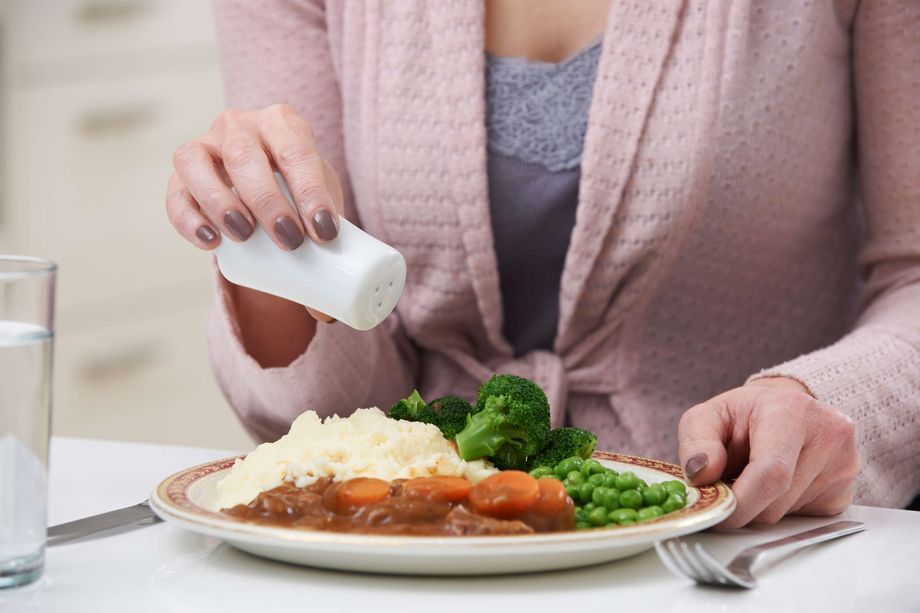In the US study, one unifying factor was noticed in cardiovascular diseases. Nine out of ten Finns also get too much salt.
Most of us eat way too much salty food every day.
If, for example, blood pressure is already high, salt intake should be limited. In a US study, it was noticed that despite the diagnosed cardiovascular disease, salt was still eaten too much. Most of the participants in the study received twice as much sodium as recommended.
Humans need salt, because the function of muscles and nerves depends on sodium. Sodium also regulates the body’s fluid balance.
However, you only need a tiny bit of sodium, a little over half a gram, i.e. a good gram of salt.
The salt intake recommendation for an adult is no more than five grams per day. Five grams is just under a teaspoon of salt.
Salt-related recommendations are popular in Finland as well. Nine out of ten Finnish adults get too much salt compared to the recommendation. Finnish men eat about 10 grams and women 7 grams of table salt daily.
The study analyzed the data of more than 3,000 people. Some of them had a diagnosis of cardiovascular disease. Most of this group was 65 years old or older. More than half of them were overweight men.

Even if you don’t add salt to the food, it accumulates as hidden salt without being noticed. Adobe stock/AOP
Insidious effects
So how does excessive salt intake affect cardiovascular health?
Salt raises blood pressure because sodium accumulates fluid in the body and increases the amount of blood in the body. Increased blood volume means more work for the heart and greater pressure on the blood vessels.
Excessive sodium intake has long been associated with hardening and stiffening of the arteries and atherosclerosis. Too much salt also strains the kidneys and is particularly harmful to brain health.
According to population studies, low sodium intake also protects against stomach cancer.
The use of salt and high-salt foods should be avoided, especially if the blood pressure is already slightly elevated.
It is noteworthy that a high salt intake can increase the risk of cardiovascular diseases, even if the blood pressure remains normal.
Too much salt in the diet also affects children’s health. It has been studied that the more salt a child or young person gets in their diet, the higher their systolic and diastolic blood pressure is. If excessive salt intake continues for years and blood pressure remains high, the result may be susceptibility to cardiovascular diseases and cerebrovascular disorders.
Excessive salt intake increases blood pressure and predisposes to cardiovascular diseases. Adobe stock/AOP
Healthier, but not salt-free
The researchers were surprised that highly educated participants at the top end of the income scale reported eating the most salt. According to them, this refutes the previous assumption that people with low education and the least income eat too much salt.
– The results reflect how easy it is to get too much salt from products, even though you think you are buying apparently healthy options, comments the nutritionist Michelle Routhenstein For Medical News Today. He was not involved in the study.
Most of the salt comes from products to which salt has already been added. This so-called hidden salt accumulates, for example, from bread, cheese, cold meats and ready meals.
Various spice mixtures, stock preparations and seasoning sauces, such as soy sauce, mustard and ketchup, also contain a lot of salt.
Foods that contain a lot of salt are, for example, salted nuts, popcorn, herring, some cheeses, cured sausages, cold-smoked fish and meat.
The researchers point out that it can be difficult for the average consumer to interpret package labels and know how much salt they actually get during the day.
Many foods contain sodium for reasons other than taste, the researchers point out. It can be used, for example, for baking and as a preservative. Many foods high in sodium don’t even taste salty.
Routhenstein advises to eat at home instead of restaurants, because the restaurant portion often contains a very large amount of salt. According to him, if possible, you should ask for the portion without added salt. At home, you should replace salt with herbs, for example. The sense of taste gets used to less salt in a few weeks.
Very salty products should only be eaten rarely. Adobe Stock / AOP
Reduce your salt intake by:
1. Choose options with less salt in food. For bread, you should choose low-salt options that contain less than 1.0% salt. Heart symbol products have less salt.
2. Reduce the use of cold meats and cheeses as bread toppings and use vegetables instead.
3. Use high-salt foods such as pizza, chips, mold and feta cheeses only occasionally.
4. Reduce the use of salty spice mixes and broth preparations.
5. Choose an unseasoned option for meat and fish. Use less ready-made barbecue sauces and season yourself with herbs, pepper and less salt.
6. In addition to herbs, try adding sweetness and acidity: tomatoes, sweet vegetables, lemon or grapefruit juice. The tartness and salt of citrus fruits activate the same taste sensors. Also try chili or mustard powder.
7. For example, unrefined sea salt and Rose salt contain almost as much sodium as table salt. Only mineral salts have less sodium. Due to its milder taste, it often has to be added twice, so it is an equally bad option.
8. Try to leave the salt out of the food and sprinkle it only a little on the food if necessary. The salt tastes stronger this way than when mixed with food, and you should put less of it overall.
9. If you have a salty craving, try fresh fruit, a piece of dark chocolate or almonds instead.
Sources: Medical News Today, Sydän.fi, Iltalehti archive
#Research #Heart #patients #common
/img-s3.ilcdn.fi/51a09c881e72d97fba2dca553b32d944f22f309ce38941a48438fb338c4179b5.jpg)

/img-s3.ilcdn.fi/554cc7afb3a0ede466f1700ea9c6b4b5e28f200255f310bad3fb6f233223436b.jpg)